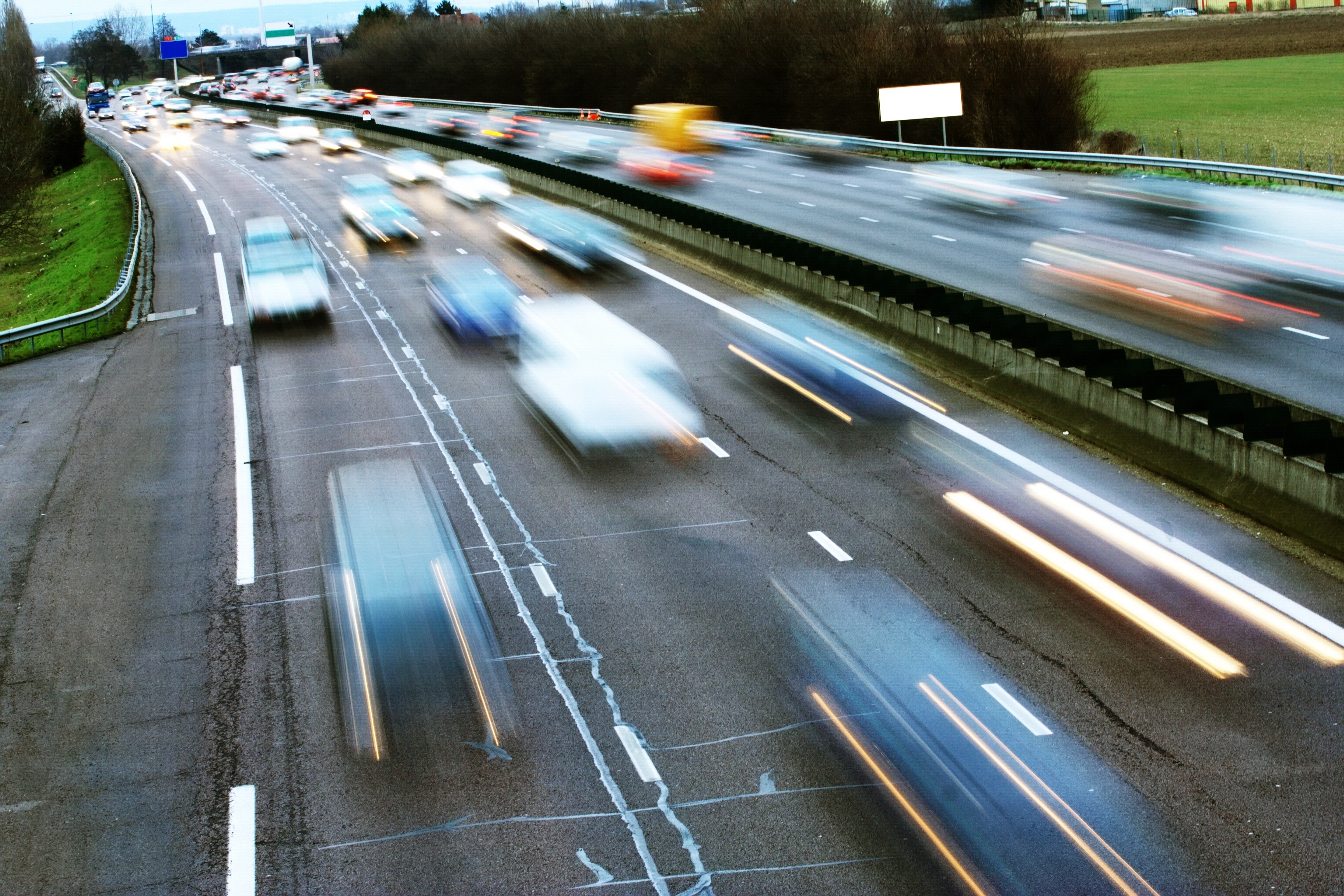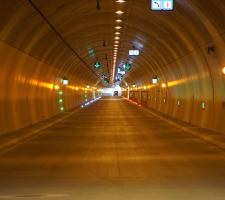
Machine vision technology’s entry into the ITS/traffic management sector has followed a classic top-down path.
This is unsurprising given the extremely demanding performance criteria which are the standard in its market of origin, manufacturing processing. Very high image qualities combined with frame rates often in the hundreds per second range resulted in vision systems with capabilities which frequently far exceeded — and continue to exceed — the requirements of ITS.
Capability drives cost. This has been a concern within the ITS market, which has traditionally been used to lower-end offerings more like those used in the security and general surveillance sectors. This resulted in machine vision’s use in traffic management being restricted to high-end, such as tolling and enforcement applications, however this is now changing and it is the low-end applications of machine vision technology which are the current pre-eminent trend.
Camera system manufacturers’ identification of the transport management sector as a market ripe for development has led to concerted efforts to lower price points. Complementary metal oxide semiconductor (CMOS) image sensor development means that CMOS-based camera products have started to seriously challenge the previously undisputed performance advantages of those which uses charge coupled device (CCD) image sensors, although both have advantages in certain circumstances. There has been parallel developments in lens and shutter technologies and standards, particularly with relation to use in highly variable outdoor conditions, as well as in standards for networking and data sharing. As a consequence, solutions are now conspicuously more scalable and flexible, both as cameras and whole networks, with intelligence distributed throughout networks according to need. This means — according to customer need or preference — from the edge all the way through to highly centralised processing and we have seen once-expensive and hard-to-justify features turned into commodities which can be had at accessible prices. The result is a range of solutions which is increasingly attractive for more cost-conscious applications.
There are many possibilities as we move away, potentially, from a very hardware-driven environment. Where applications such as detection and monitoring of vehicle classification once involved the use of dedicated in-road systems, authorities can now more freely contemplate the use of ubiquitous vision systems. These offer greater flexibility, whether by increasing the application set of existing installations or complementing them with additional cameras. The factors governing design decisions are shifting even within given applications. While cameras with fields of view spanning several traffic lanes are perfectly valid for general observation and even automatic incident detection, occlusion (such as when the view of a lane is obstructed by a high-sided vehicle) is an issue. This has led, where revenue gathering is concerned, to a per-lane installation often being necessary.
However, their increasing inexpensiveness results in a convincing business case for installing a high-performance camera above each lane in applications where guaranteeing revenues is not a prime motivator.
In terms of tolling, Sweden provides an example of what is achievable, both in scale and accuracy. It has a very accurate national vehicle register and has implemented video-based congestion tax schemes in cities such as Stockholm and Gothenburg and at other locations across the country. London’s well-established Congestion Charge also uses Automatic License Plate Recognition (ALPR) for both charging and the all-important enforcement function but there are geographic differentiators which will dictate the pace of acceptance or change. In many developed countries there is a well-established reliance on tag-based solutions for a sizeable number of vehicle identification, payment and access control applications. In such countries it may be harder to encourage authorities and concessions there to move away from what is often a considerable sunk cost in terms of technology, supporting infrastructure and intellectual property. On the other hand in developing nations the absence of legacy systems makes the use of vision more logical and readily achievable, and the Middle East and Eastern Europe have to be considered prime markets. This holds true for both tolling and other applications.
Granular data
It is the enriched nature of data which should cause excitement. One of the recurrent themes of smart city concepts is how they use fusion and analysis techniques to get at the truly granular in data terms; it is at this level, which is a significant improvement on the aggregation techniques used in data warehousing, that the truly useful patterns of behaviour can often be identified.
ALPR has applications for road pricing and enforcement, including environmental zone and average speed enforcement, but is also often used to provide travel time and origin-destination information which can help traffic planners and managers to gauge and accommodate capacity needs. The ability to have much more, and more accurate, ALPR-based origin-destination information is in line with the kinds of smart city thinking that we can expect to see more of in the coming years. Infomobility is being enabled by vision systems.
Traditional applications such as enforcement continue to see new developments. In The Netherlands, in the past year, the city of Delft has moved towards fully digital parking with the aim of improving efficiency and ease of use for both the local authorities and users. Users only have to register their vehicles’ registration numbers via the city’s website, via phone or through local payment stations in order to be granted the right to park. Enforcement is digital and uses Arvoo’s vehicle-mounted ScanGenius ALPR scanner.
Mounted on the vehicle’s roof are six ALPR cameras which read the registrations of cars parked on-street, allowing real-time comparison of details with a database of permitted users. Enforcement officers are informed of discrepancies via PDAs and can take action — a solution which saves considerable time and effort. The cameras capture a panoramic view for enforcement evidence and the system features Q-Free’s Intrada ALPR software.
Another truly exciting prospect is that of a gate-less society. Here again, cameras’ lower price points are driving increasing numbers of deployments. At the The Wesley and St Andrews War Memorial hospitals in Brisbane, Australia, recently installed access control systems feature three cameras on each entry lane. Pre-registered payment and post-journey reconciliation/enforcement are all made possible by the fact that all vehicles have license plates, and differentiation is possible between the facility’s employees, visitors, according to length of stay and so on. Similarly, in the Dutch city of Assen, citizens can enter and exit parking facilities without stopping and are billed each month for their total parking times.
It is not only the proliferation of ALPR for data-gathering that can be expected in the future. The increasing performance of less expensive cameras will enable increased safety by making the tracking of hazardous goods more effective across larger sections of the road network.
Hazardous goods vehicle tracking is based on the identification and tracking of various of a vehicle’s characteristics — its licence plate(s), the presence of DOT and warning plate information conforming to various national and international standards, and those of the vehicle itself. But at its core it is reliant on the use of good-quality vision-based systems. This trend towards the more prolific use of video for such applications is illustrated by a recent project involving Q-Free group company Traffic Design, in the Markovec Tunnel.
The 2,150m-long Markovec Tunnel is the major engineering undertaking on the 14km Mediterranean section of the highway which will eventually connect Slovenia with Croatia’s Istria peninsular. Q-Free has designed and is in the process of installing a comprehensive tunnel management system in readiness for the tunnel’s scheduled opening this May. The work is worth €1.2m and is taking place as part of a larger, consortium-led project to deliver the highway.
Tunnel safety
The management system conforms to the latest European Union Directive on tunnel safety and uses video for detection and surveillance and has a total of 63 video detection cameras and 23 speed-dome cameras installed, along with four license plate recognition cameras. In addition to providing traffic management there is a comprehensive Automatic Incident Detection solution which will monitor for and generate responses to more serious incidents including tunnel fires, ghost (wrong-way) drivers, stopped vehicles and lost cargo. It also enables the tracking of dangerous goods vehicles.
A full suite of systems includes lighting, emergency telephones, traffic monitoring equipment and signals, ventilation, water supply, fire system, radio system, video surveillance and detection system, and a dangerous goods detection system. As system integrator, Q-Free has designed and is implementing the supervisory control and data acquisition (SCADA) system that will tie all these functions together and it is also outfitting the traffic control centre in Kozina which will control the new highway.
Decoupled technology
Along with the technology, business models are also evolving and as a major supplier to the market Q-Free is separating the technology aspect of ALPR from the commercial. Where once it was necessary to embed an ALPR capability within a product or solution, it is now possible for road network operators to take advantage of decoupled services all the way up to and including fully managed services.
By becoming technology-agnostic and taking advantage of developments in the information and communications technology sector, authorities can use Q-Free’s ALPR products to suit their own operating philosophies. At-the-edge, in-camera processing and PC-based analysis are possible but newer Cloud-based services are also now available.












